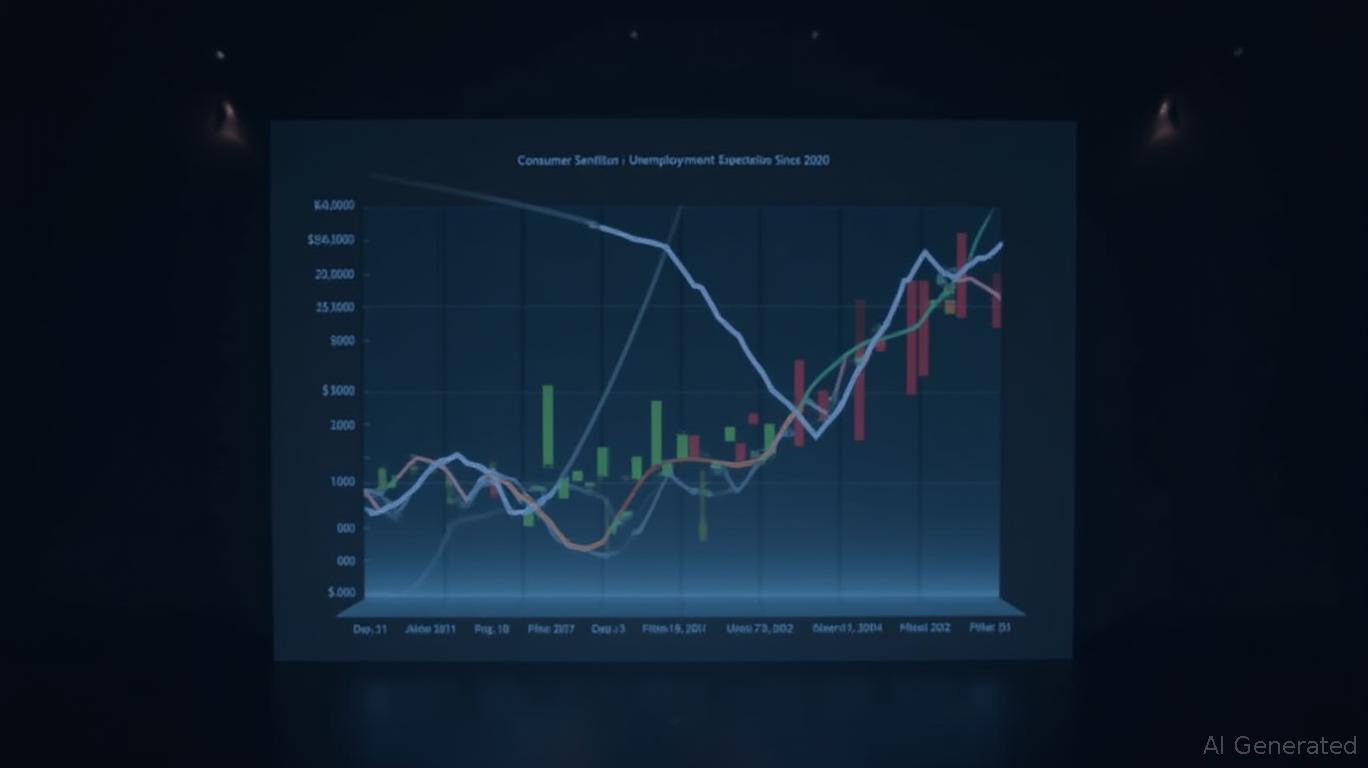Stagflation Risks and Fed Rate Cuts: Navigating Q2 2025 with Precision
The U.S. economy stands at a crossroads, with mounting stagflation risks threatening to derail the recovery. Recent data from the March Federal Open Market Committee (FOMC) meeting, March CPI figures, and the April consumer sentiment collapse have painted a stark picture of an economy grappling with inflation persistence and slowing growth. For investors, this is a pivotal moment to position portfolios for Fed policy shifts and sector rotations. Let's dissect the evidence and chart a course through Q2 2025.
The FOMC's Dilemma: Tariffs, Inflation, and Growth Slowdowns
The March FOMC minutes revealed deepening concerns over tariff-driven inflation and its corrosive impact on growth. The Fed's decision to hold rates steady at 4.25%-4.5% underscored its reluctance to ease prematurely, but the Committee acknowledged rising risks to its dual mandate of price stability and full employment. Tariffs, a wildcard in this calculus, were cited as a major threat to both inflation and GDP growth.
Regional Fed surveys and the Beige Book highlighted widespread business anxiety, with manufacturing sectors reporting slowing output and rising input costs. The FOMC's reluctance to cut rates unless inflation declines or unemployment rises sharply suggests a wait-and-see approach. Yet, with stagflation risks climbing—simultaneous inflation and unemployment pressures—the Fed may face pressure to act sooner than markets expect.
CPI Data: A Fragile Inflation Picture
March's CPI report offered a mixed bag. Headline inflation dipped to a 2.3% annual pace—the lowest since 2021—driven by falling food and energy prices. Core inflation (excluding food/energy), however, remained stubborn at 2.8%, with shelter costs contributing over half of the monthly increase. The disconnect between headline and core inflation is critical: while energy volatility has eased, structural inflation drivers like housing costs remain entrenched.
Importantly, the Fed's preferred inflation measures (e.g., PCE) still lag behind CPI, but the trend suggests a deceleration. Yet, the FOMC's caution is justified—the March data alone won't prompt rate cuts. Persistent core inflation and rising wage pressures (e.g., healthcare and tech sectors) leave room for skepticism about the “transitory” narrative.
Consumer Sentiment: A Warning Siren for Stagflation
April's University of Michigan consumer sentiment data was a bombshell. The index plummeted to 50.8, a 34% year-over-year decline and the worst reading since 2009. Consumers are now pricing in 6.7% inflation over the next year—the highest since 1981—and fear of unemployment has surged.
The collapse wasn't isolated. Expectations for future economic conditions fell to 47.2, with nearly half of respondents predicting rising unemployment. This pessimism isn't just psychological; it's a leading indicator of spending cuts, particularly in discretionary categories like travel, dining, and big-ticket items.

The Fed's Crossroads: Rate Cuts by Year-End Are Inevitable—Here's Why
The data points to a clear path: stagflation risks are too severe to ignore. The Fed's options are narrowing:
1. Inflation is sticky: Core CPI remains above 2.5%, and shelter costs are a multiyear drag.
2. Consumer confidence is collapsing: Spending slowdowns will amplify GDP headwinds.
3. Global trade tensions: Tariffs and trade wars are compounding uncertainty, making businesses and households risk-averse.
The Fed's 2025 rate-cut timeline is now baked in. Markets are pricing in two to four cuts by year-end, starting as early as July. While the FOMC may delay until September, the combination of slowing growth, elevated inflation expectations, and deteriorating sentiment will force their hand.
Investment Implications: Play the Fed, Not the Noise
The stagflation backdrop demands a strategic tilt toward rate-sensitive assets and a defensive stance on vulnerable sectors.
Buy Rate-Sensitive Assets
- U.S. Treasuries: With the Fed's pause likely to extend, the 10-year yield could drop sharply. The TLT ETF (long-term Treasury bonds) is primed for gains as rates retreat.
- Real Estate: REITs (e.g., VNQ) and housing stocks (e.g., ZTR) should benefit from lower borrowing costs and pent-up demand in housing.
Avoid Consumer Discretionary Stocks
- Tech & Retail: Companies like AMZN, TSLA, and SHOP rely on discretionary spending. A consumer slowdown will hit margins hard.
- Auto & Luxury: GM, F, and LVMH face demand risks as households tighten budgets.
Short-Term Caution on Equities
The S&P 500's year-to-date gains (driven by AI hype and Fed optimism) are at risk. A correction could follow if Q2 GDP prints below 1%, reinforcing stagflation fears.
Final Call: Position for Rate Cuts—Now
The writing is on the wall: stagflation risks are real, and the Fed will act. Investors who pivot to Treasuries, real estate, and defensive sectors now will capitalize on the policy shift. Avoid the “growth at all costs” narrative—consumer discretionary and tech are vulnerable to a spending slowdown.
The Fed's patience has limits. With inflation expectations spiking and sentiment cratering, the path to rate cuts is clear. Move swiftly—this window won't stay open forever.

Stay vigilant, stay tactical.

Comments
No comments yet